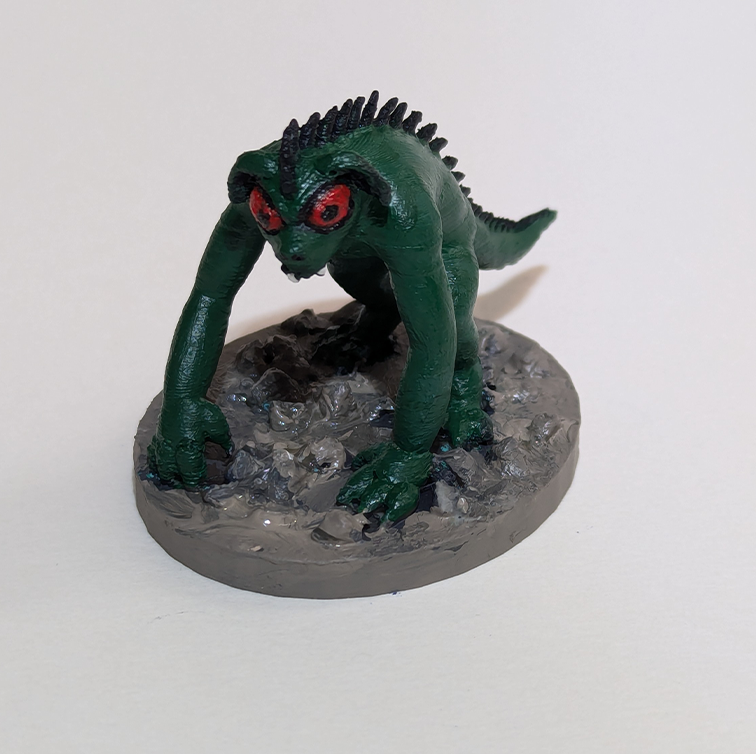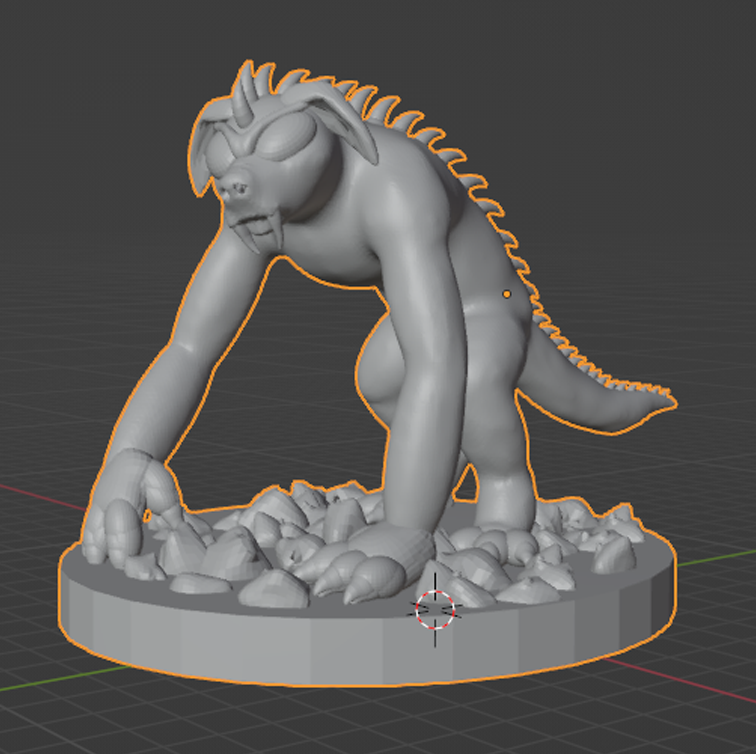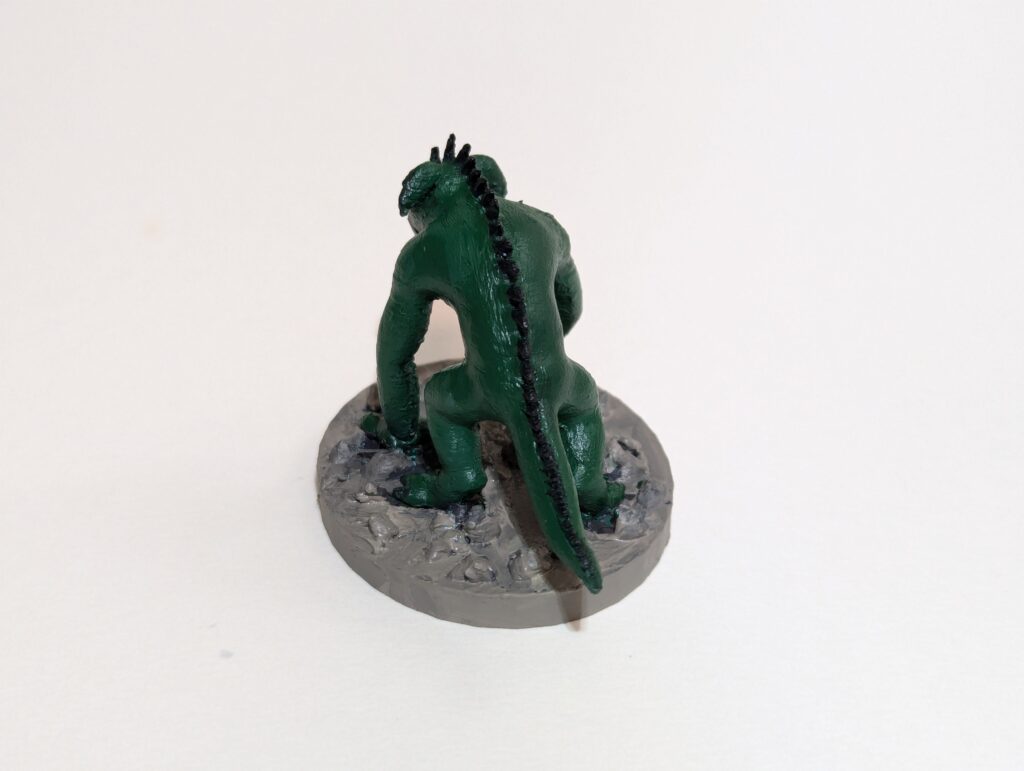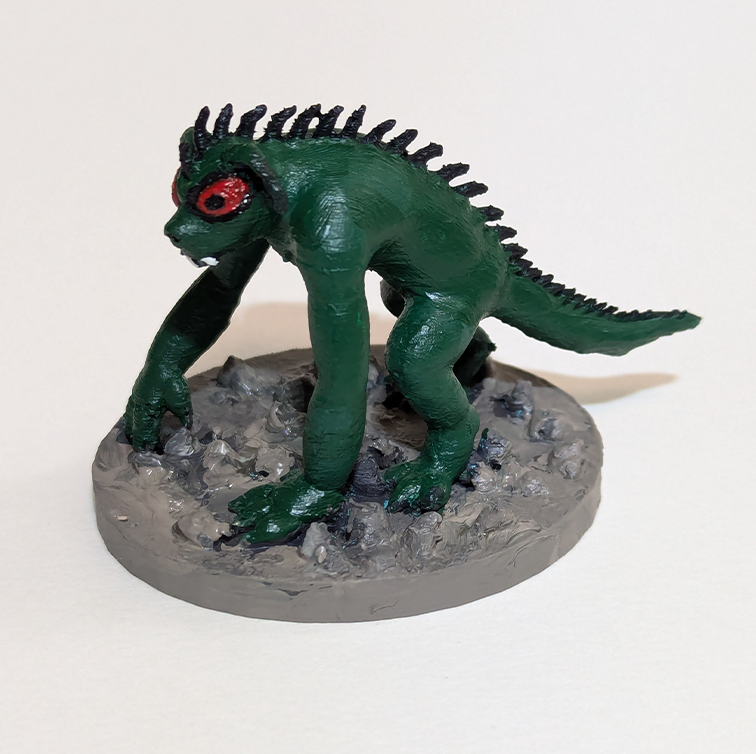Of all the cryptids you see in pop culture, few capture the collective imagination of the Chupacabra. Originally reported in Puerto Rico, the “goat sucker” was described as a fanged, bipedal lizard like alien with spikes down its back. By the time the tale made it to the mainland, it had evolved into more of a vampiric and mangy coyote type creature.
Either way, since the mid 90’s when it was first reported it has taken our imaginations by storm. The artist “Stepbastard” has let his thoughts run wild with it and created a 3d render of this beasty. You can learn more about it at Stepbastard.com .
If you would like to purchase the model as an STL, you can find it here. If you would like to purchase the model as a 3d Printed copy (or even hand painted) you can get it here.

The Chupacabra: The Original Story
Introduction:
In the mid-1990s, the legend of the Chupacabra emerged from the lush, mountainous terrain of Puerto Rico, capturing the imagination of people around the world. It began with eerie reports of livestock found dead, their bodies mysteriously drained of blood. The creature responsible was dubbed the Chupacabra, or “goat sucker,” a name that would soon become infamous.
Origins of the Legend:
The first reported sighting of the Chupacabra came in March 1995, in the town of Canóvanas, Puerto Rico. Residents awoke to find eight sheep dead, each with three puncture wounds on their chest and reportedly completely drained of blood. A local woman named Madelyne Tolentino claimed to have seen the creature, describing it as a reptilian-like beast, approximately four to five feet tall, with sharp spines running down its back.
Translation of Puerto Rican News Reports:
“El Nuevo Día,” March 1995: “Residentes de Canóvanas están aterrorizados después de encontrar varios animales muertos, aparentemente sin una gota de sangre en sus cuerpos. Los cuerpos de las ovejas mostraban extrañas marcas de punción, y una testigo, Madelyne Tolentino, describió a la criatura como una bestia de apariencia reptiliana, con espinas a lo largo de la espalda.”
“Residents of Canóvanas are terrified after finding several animals dead, apparently without a drop of blood in their bodies. The bodies of the sheep showed strange puncture marks, and a witness, Madelyne Tolentino, described the creature as a reptilian-like beast, with spines along its back.”

Investigative Report: The Chupacabra Phenomenon
We delve into the mystery that has puzzled scientists, terrified locals, and spawned a global legend: the Chupacabra. We journey to Puerto Rico, where it all began, to uncover the truth behind this enigmatic creature.
Introduction: In March 1995, the tranquil town of Canóvanas, Puerto Rico, became the epicenter of a mystery that would grip the island and soon, the world. Residents reported a series of bizarre animal deaths. Livestock, mostly goats and sheep, were found lifeless, with peculiar puncture marks and completely drained of blood. This wasn’t the work of any known predator.
The First Witness: Madelyne Tolentino, a local woman, claimed to have seen the Chupacabra. Her description was chilling: a creature standing four to five feet tall, with an alien-like appearance, large eyes, a row of spines down its back, and a reptilian skin texture. This detailed account was the first of many, each adding to the growing legend.
Translation of Madelyne Tolentino’s Account (From March 1995): “Vi a la criatura claramente. Tenía ojos grandes, una fila de espinas en la espalda y una piel como de reptil. Medía unos cuatro a cinco pies de altura y se movía de una manera que nunca había visto antes.”
“I saw the creature clearly. It had large eyes, a row of spines on its back, and skin like a reptile. It stood about four to five feet tall and moved in a way I had never seen before.”
Scientific Scrutiny: As the reports spread, scientists and cryptozoologists descended on Puerto Rico to investigate. Some suggested that the Chupacabra could be a previously unknown animal species, while others believed it might be an elaborate hoax or a case of mass hysteria. Veterinarians examined the dead animals, noting the unusual puncture marks but found no definitive explanation for the complete exsanguination.
Alternative Theories: Several theories emerged. Some proposed that the Chupacabra was a genetic experiment gone wrong, possibly escaping from a secretive laboratory. Others pointed to the psychological impact of the reports, suggesting that fear and imagination played significant roles in the sightings.
Eyewitness Accounts: Numerous eyewitnesses came forward, each with variations of the creature’s description, but consistent in the fear it invoked. They described glowing eyes, the creature’s eerie silence, and its ability to vanish without a trace.
Order your 3D printed Chupacabra Model HERE
Conclusion: The Chupacabra phenomenon remains one of the most intriguing and enduring mysteries of modern folklore. Whether a real creature, a series of misidentified animals, or a product of collective imagination, the legend of the Chupacabra continues to captivate and terrify.
Download your Chupacabra STL HERE
As we leave the lush landscapes of Puerto Rico, one thing is clear: the Chupacabra, whether myth or reality, has secured its place in the annals of cryptid lore, a testament to the power of stories and the mysteries that still lie in the world around us.



